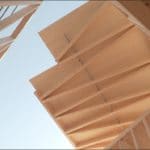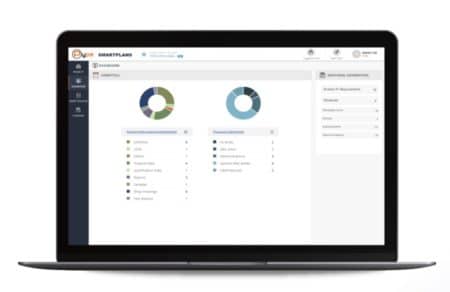You are reading the “early access” edition of INSIDER Xpresso newsletter’s (emTech) section.
On Sunday 1 September 2019, we will release the complete INSIDER Xpresso newsletter #07 to all subscribers. The newsletter from Architosh is free. Our Early Access editions of the popular Emerging Technologies section are for INSIDER members-only and include deeper commentary and more visuals than the newsletter itself. Our deeper analysis commentary will always be written in Architosh blue text.
If you enjoy Architosh or our Xpresso newsletter, share your enthusiasm on Twitter or LinkedIn by clicking the social media buttons on this page. (thank you!).
Xpresso #07—What’s In This Issue
Last month’s INSIDER Xpresso issue #06, we asked readers of our newsletter to offer us feedback—good or bad or both—to tell us what they liked and disliked about Xpresso. In exchange, they got INSIDER Membership subscription on Architosh for one year, gratis. That offer naturally still stands. If you are already an INSIDER Member you will gain another free year.
Some of the best comments were criticisms that we want to respond to. The first was, “the newsletter is a bit too long.” And thus, it cannot be read in one sitting. The suggestion was that readers would also benefit if there was an organization to help them jump back into it after one sitting. The other suggestion was that all the links be summarized into a table and organized. In this issue, we are addressing both. At the end of this (emTech) section, you will find a listing of company/products listed. And a TOC (table of contents) for the emTech section itself below.
TOC emTech #07
- A Note About the Size of the Global Construction Industry: With Commentary
- The House that Robots Built — DFAB House on the BBC
- AI in Construction – With Commentary
- AI in Architecture – With Commentary
The vast numbers of subscribers to Architosh INSIDER Xpresso are in the AEC industry. We will share some statistics with all readers likely in the next or thereafter issue. Folks in the AEC industry are naturally inclined to learn about its size. The size of the global construction industry and its rate of growth are continuously gauged, projected, and estimated.
Key Takeaways: The global construction industry will outpace global GDP growth by 1 percent from here until 2030. The US, China, and India dominate, marking key growth markets for international AECO sector firms.
PWC has sponsored a new report that says the global construction industry will reach USD 15.5 trillion by 2030, with three countries—China, US and India—leading the way and accounting for 57 percent of all global growth. That growth is based on average global construction growth of 3.9 percent to 2030—outpacing that of global GDP by one percentage point.
What if robots built your house, what would it look like?
India’s construction economy will grow trice as fast as China’s construction industry. It also notes that the UK will overtake Germany to become the largest construction market in Europe and the sixth-largest market in the world by 2030. India and the UK are, therefore, top growth engines to keep an eye on. This should mean that AECO industry software companies should position themselves for these key standout markets.
The global construction industry was USD 10.6 trillion in 2017 and rising to USD 12.7 trillion in 2022.
Further Commentary: Ian Bremmer, founder of Eurasia Group and author of Us vs Them: The Failure of Globalism, makes the note that India will overtake China as the most populous country on earth in five years. It also notes that India has the most distressed infrastructure of a major global economy. Finding India on the list of top three countries for construction might surprise, but given its population explosion (50 percent of the population is under 25) it is a country in desperate need of infrastructure improvements for a multitude of reasons. Chief among them: getting young people to sources of education and higher-learning to prepare them for a country that is ripe for automation to displace workers.
The Economist wrote back in 2017 that American builders’ productivity had plunged by half since the late 1960’s. This is the core problem facing the AECO industry. Productivity has stalled for 40 plus years, despite digital technologies. This time, AI, machine learning and other emerging technologies may make the critical difference. The rest of this issue focuses on AI and ML in construction and architecture and the new technologies and companies that aim to generate productivity gains in AECO.
The House that Robots Built — DFAB House on the BBC
The BBC series “The Disruptors” had a segment focused on DFAB HOUSE and the Robotic Fabrication Lab (RFL) which are associated with ETH Zürich in Switzerland.

DFAB House utilized advanced digital technologies including robotics to show what is possible with transformative technologies in AEC. (image: screen capture from BBC video)
“What if robots built your house, what would it look like?” is the essential question being answered by this research project.
DFAB House is the result of a researched process to answer that very question. It features components and methods of construction that today are each individually being explored with robotics and computational design.

Computational design allowed for uniquely angled wood framing that used less wood to build. (image: screen capture from BBC video)

An image of the wood structure using less wood but more uniquely spaced members. (image: screen capture from BBC video)
For instance, its frame is made of solid wood members. The frame is entirely built by a pair of robots that assemble each wood member using wood screws and bolts. You can watch snippets of the pair of robots in action building the frame. What is unique isn’t just the construction but also the design. The frame doesn’t look like conventional wood framing, with studs and joists spaced at set intervals. Instead, the framed members are set at various angles, resembling truss design, that absorb gravity and lateral forces in such a way that the structure is composed of less wood actually than if conventionally framed. In this case, algorithms designed a more sustainable structure in wood and robots built it.
DFAB House also features a curvilinear concrete wall and there a robot tied the steel rebar. Here on INSIDER Xpresso we have shown and discussed robots designed specifically for the purpose of tying rebar. At DFAB House robots weld the rebar and steel frame in the main wall, which the DFAB team says humans would have found it almost impossible to construct unaided.
The roof is even more aggressive and strange. An organic-shaped mold was 3D-printed and became the formwork for the structural concrete roof. Each piece was lifted into place using a crane. (see picture). Robots are a long way from replacing humans on job sites, but they are excellent candidates for supplementing humans doing repetitive, heavy, dangerous and boring work. For example, we have written about SAM (semi-automatic mason) developed by Construction Robotics in the US. It can lay a masonry wall much faster than men but still needs the aid of men to set-up the work, tidy up mortar finished joints, etc. The DFAB article mentions Japanese company Komatsu, which sells GPS-based diggers for site earthmoving work. The GPS system knowns where the buckets are in the project world to within one or two centimeters.
The results of DFAB House are interesting and informative. They show us where some of the possibilities are with both the design and construction of buildings. The entire BBC segment is found here. (video included)
AI (Artificial Intelligence) in Construction
OpenSpace raises USD 14 million in a series-A round. The company makes an AI platform that visually tracks construction projects. Notable participants in its series-A include WeWork, Suffolk Construction, Navitas and others. OpenSpace’s solution involves software, naturally, and a Garmin VIRB 360 camera that builders strap to their hardhats to document site progress. The images are then mapped automatically to project plans and are naturally date-organized, enabling users to track progress visually using the captured images, which are themselves organized using machine intelligence (AI-ML) and computer vision. BusinessInsider Prime (subscription) has an inside look at the pitch deck OpenSpace used to raise their series-A round.

OpenSpace uses computer vision and machine learning to provide a solution that solves numerous issues for contractors, including RFI support and others.
The global market for AI in construction is now forecasted to reach USD 4.51 billion by 2026, according to a new report here. Notable in the report is that small and medium-sized organizations will witness higher growth rates of 35.8 percent during the forecast period.
Robots and drones are clocking in on construction sites, reports the Arizona Daily Star. Virtual Construction Technician and Virtual Construction Supervisor are new titles that are popping up on recruiting sites in the AEC industry. The article notes that drones may, one day, paint skyscrapers or other tall structures, reducing “risk” inherent to jobs involving heights.
The Chilean software company, Calidad Cloud. Founded seven years ago, the firm has 80 plus clients for its data management application, which uses AI to handle and predict quality assurance in projects through the use of data algorithms.

Pype’s upcoming SmartPlans uses AI to automatically analyze blueprints and determine require submittals.
Pype readying Q4 launch of SmartPlans, says ConstructionDive. The new product, according to its developer, can dramatically reduce the time necessary to help teams locate and organize critical information from blueprints. SmartPlans uses AI to analyze a set of blueprints and find and organize all embedded submittal information, including product, equipment, and finish schedules.
Autodesk Brazil president says in BNAmericas that Brazil’s construction industry has enjoyed healthy margins for years and this has partly explained why investment in technologies, including AI, has been very slow by infrastructure and construction companies in the country.
Here are some other basic market size data on AI in the construction market. Global Artificial Intelligence in Construction Market 2019 forecast to 2024. From 2019 – 2023 will grow by over USD 1.1 billion.
AI and Architecture and Design
Architectural Digest in August noted an ongoing research program by McKinsey Global Institute that says that every occupation includes multiple types of activities and each has a “different requirement for automation.” Quoting:
Almost all occupations have a partial automation potential. And so, almost half of all the work done by humans can eventually be taken over by a high intelligence computer.
Citing a recent study by University College London (ULC) and the University of Bangor, architecture industry employees will not be replaced by AI anytime soon but in the near future the architecture industry will undergo massive transformations. The article notes that repetitive tasks are ideal for automation, saying that: Computers can replace tedious repetitive activities, “optimising the production of technical material and allowing, among other things, atomise the size of architectural offices. Each time fewer architects are needed to develop more complex projects.”
Further Commentary: The article makes the correct note that architects typically use knowledge from past design and construction projects. But the AEC industry as a whole has been lacking knowledge management systems for quite some time. Architects, in particular, rarely utilize any kind of knowledge management (KM) software solutions and there are no major software industry firms producing such systems specifically to help architects capture and manage knowledge useful for repurposing and future projects.
OpenSpace’s tool of capturing visual photographic imagery over the construction lifecycle of a building project is itself useful to architects, who often need to refer to book resources or data on multiple websites to understand construction techniques, particularly with newer systems not familiar to an architecture firm. Younger architects often stymied during construction documentation due to a lack of this type of knowledge. While less sexy than using machine learning to automatically generate designs using algorithms that satisfy criteria the architects have programmed into a system, AI in architecture might begin to make practical steps towards data management.
Issue Index
We have mentioned the following companies and solutions in this issue (see above).
Calidad Cloud — construction industry software.
Komatsu SmartConstruction — GPS based diggers.
OpenSpace — construction industry software.
SmartPlans — construction industry software.
SAM100 — construction industry robot for masonry work.
Closing Notes
If you are an INSIDER Member on Architosh you are reading this exclusively, as only subscribers to INSIDER membership have early access to the (emTech) section of the upcoming Xpresso newsletter.
If you are an INSIDER Member reading this article and have not yet signed up for the INSIDER Xpresso newsletter, you can sign-up here for free. The monthly focuses on emerging technologies (emTech) and their impact on CAD and BIM-based industries and society as a whole.
INSIDER Members with annual subscriptions gain early access to Xpresso features—such as the (emTech) section you just read.





Reader Comments
Comments for this story are closed